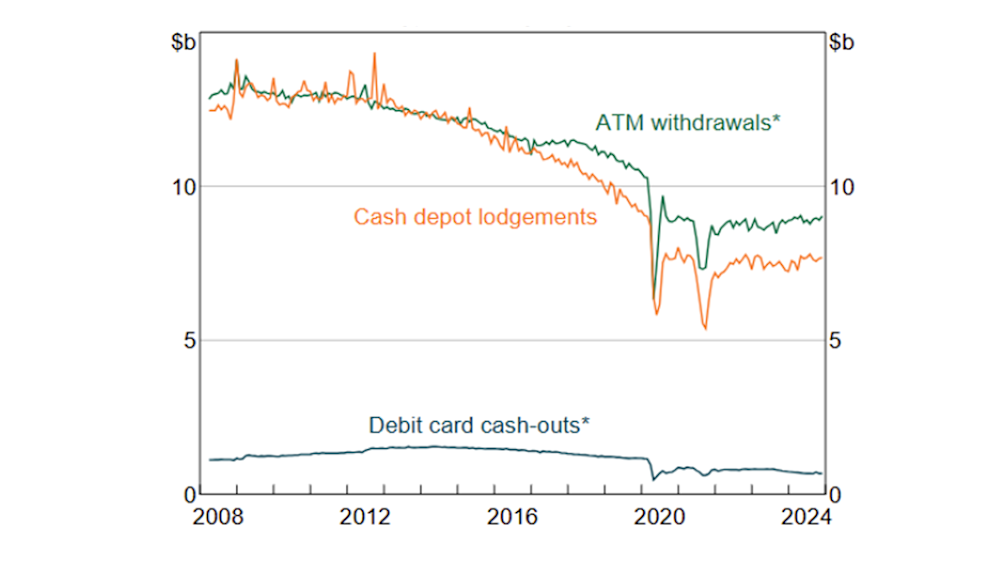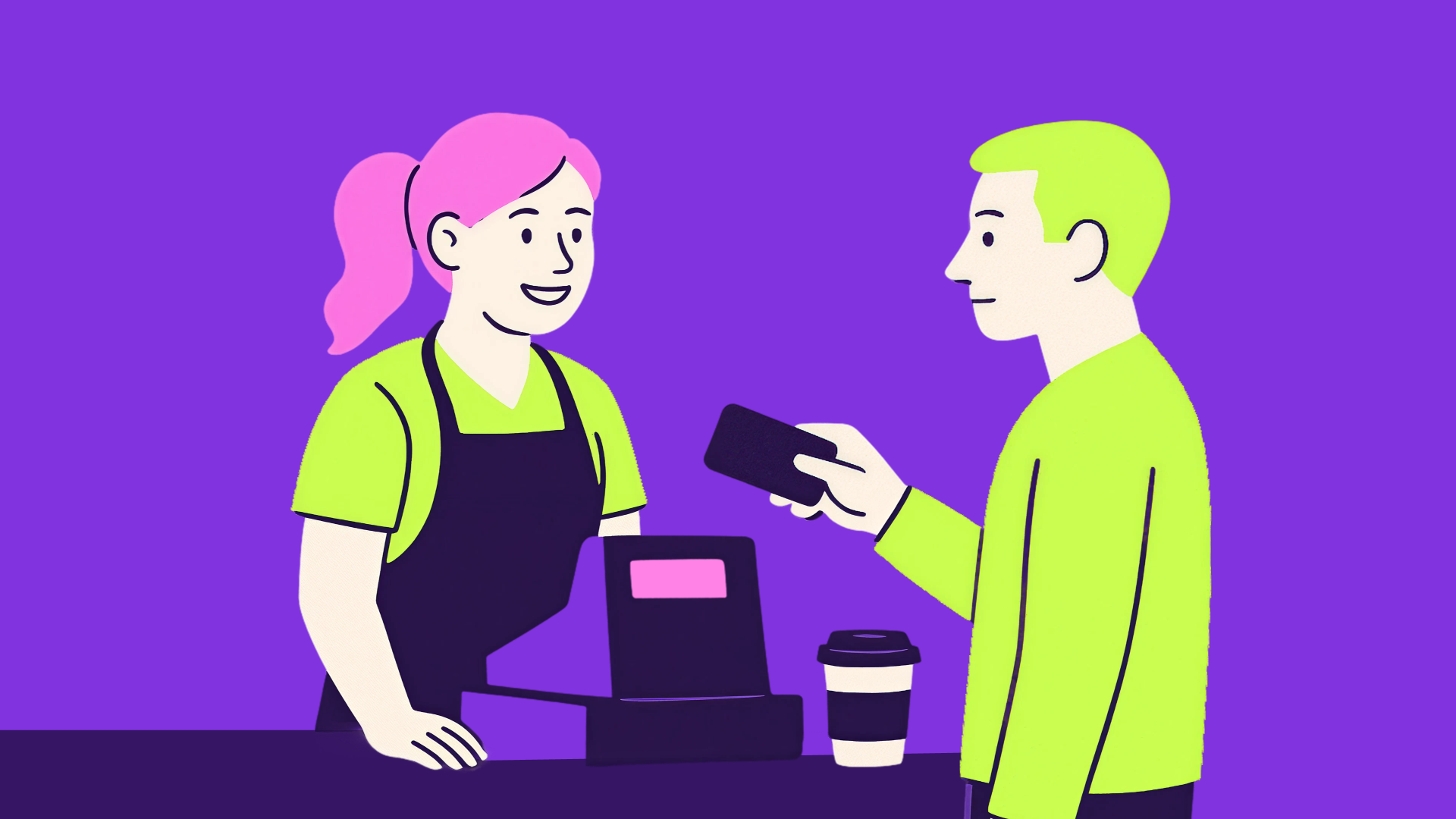Time to read : 5 Minutes
You grab a coffee, tap your card, and the total flashes up 50 cents more than what you were quoted... again. But, that tiny, extra charge – which adds up over time – may soon be history, thanks to a recent update from Australia’s central bank.
The Reserve Bank of Australia (RBA) wants to ban surcharges on eftpos, Mastercard and Visa cards. Aussies currently pay $1.2 billion a year in surcharges and the RBA’s got a plan to shake this up and put a stop to unfair charges.
Why are we paying surcharges?
If you’ve ever wondered why we have to pay surcharges in the first place, these fees cover the cost of what businesses are charged by their bank or payment provider, and are usually called a merchant service fee.
The ACCC, Australia's competition watchdog says, "Businesses can charge a surcharge for paying by card, but the surcharge must not be more than what it costs the business to process that payment type."
Originally, the logic was customers could choose to either pay with cash or debit, and avoid a fee. But fast-forward to today, and that idea feels out of date.
And, with the cost-of-living-crisis it’s easy to feel there’s a lot of “plus, plus, plus-ing’ the fees. Even for cash users and debit users, by the time you add weekend rates, public holiday rates, and GST, the price you see is not the price you pay.
Why it no longer works
While I still love carrying both cash and cards, increasingly the cash is collecting dust as sellers push for digital ‘tap and go’. And, it seems I’m not alone. The RBA reports that only 13% of transactions in Australia now involve cash. This downwards trend in cash usage also goes for ATM withdrawals and cash lodgements, all falling. (See graph). That means avoiding a card surcharge is getting harder, if not impossible.
Cash use for transactions (monthly)

* Series break in May 2018 due to changes in reporting methology. Source: RBA
I once paid a surcharge at my local cafe for using my everyday debit card. That’s right, debit. I asked the owner why and it turned out their payment terminal was set to apply a flat surcharge to everything, even for transactions that cost them less. “Everyone’s doing it,” he shrugged.
And that’s the point. We’re paying more even when it doesn’t reflect the actual cost.
What the RBA wants to change
1. Ban surcharges
Completely remove card surcharges on eftpos, Visa and Mastercard.
2. Cut interchange fees
Lower the cap on the fees your bank pays the merchant’s bank each time you tap your card.
3. Boost transparency
Require card networks and large acquirers to publish the fees they charge businesses.
What does this mean for you?
No one likes to be stung with a charge that is unreasonable. If the RBA move does go through we may no longer cop those frustrating 1-2% surcharges on our morning coffees, groceries, Uber Eats – to name just a few.
We could also expect prices to be more upfront and predictable, limiting those surprises at the checkout.
While we as consumers could hope to have $1.2 billion per year in surcharges slashed, the RBA also believes 90% of businesses are expected to be better off under the changes.
Yes, but… some experts have raised concerns that while visible surcharges might disappear, the costs won't simply vanish. Instead, there's a risk that businesses may bake these fees into the overall price of goods and services. That means your $5 pastry could quietly become $5.20, as businesses look to recover merchant fees in less obvious ways.
This makes transparency more important than ever. Businesses should remain fair in how they pass on costs and consumers should stay vigilant.
Why I agree with the RBA’s push for reform
I’ve always believed that clarity and fairness is non-negotiable when it comes to business, and payments. These proposed reforms speak directly to what’s broken in the system today. My Dad always taught me the importance of looking at receipts to ensure you’ve been charged accurately. As someone who follows this process, it’s been getting increasingly unfair.
Surcharges have become a tax on convenience. They hit hardest for people who have no real choice but to pay by card, especially low-income earners, students, and younger Aussies who are fully digital and rarely carry cash.
And because some retailers don’t clearly disclose what you’re being charged, or apply the same fee – whether it’s a high-fee credit card or a low-cost eftpos transaction – you’ve got a broken model.
That said, it’s important to acknowledge that business owners are facing rising operational costs across the board – from rent and wages to payment processing. For many, surcharges have been a way to offset the growing fees imposed by banks and payment platforms, especially for small businesses operating on thin margins.
Getting rid of surcharges could put extra pressure on small businesses unless the reforms are backed with real cuts to back-end costs. A balanced approach should support both consumers and businesses, and be fair across the payment ecosystem.
What happens next?
1. The RBA will review submissions.
2. A final decision and rollout plan will be announced by the end of 2025.
3. If passed, we could see a surcharge-free card payment system roll out in 2026.
Bottom line
That sneaky extra dollar on your dinner bill might soon be history.
The RBA’s proposed changes aim to make card payments simpler, fairer, and more transparent. Whether you’re tapping with debit, credit, or a phone, the price you see should be the price you pay.
If the reforms go through, it could save Australians billions, without you needing to carry coins or count cents.
Now that’s what I call a win for modern money, and every Aussie wallet.
Go deeper:
Financial disclaimer
The information contained on this web page is of general nature only and has been prepared without taking into consideration your objectives, needs and financial situation. You should check with a financial professional before making any decisions. Any opinions expressed within an article are those of the author and do not specifically reflect the views of Compare Club Australia Pty Ltd.
